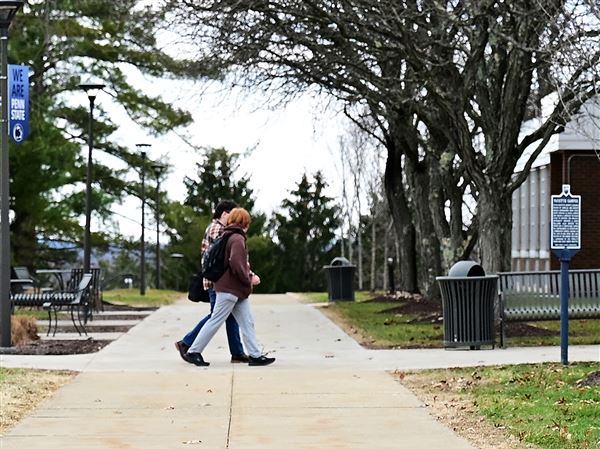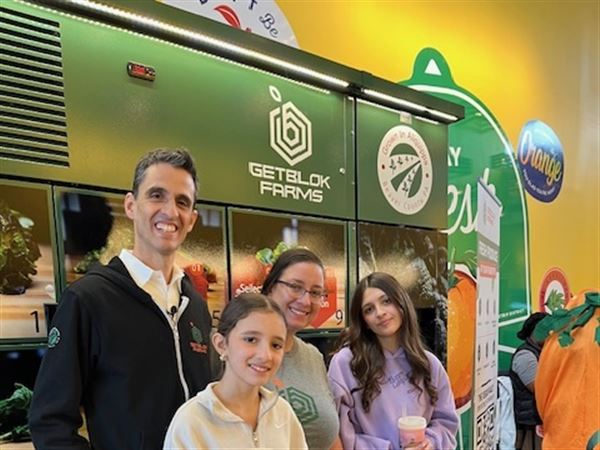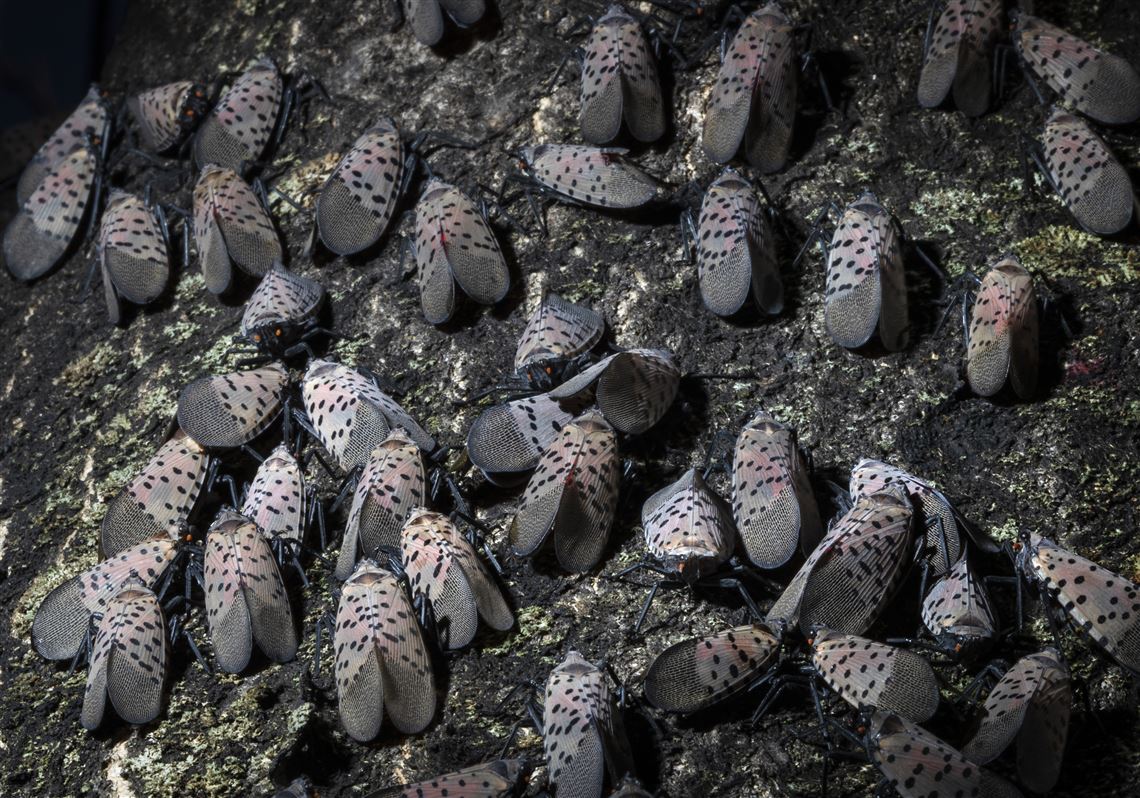Spotted lanternflies (Lycorma delicatula) are an invasive species of insect that have established themselves in the United States after hitching a ride in stone shipment from Asia. They were first detected in Pennsylvania’s Berks County in 2014.
Though they don’t bite or sting but, they are the “worst bug in the commonwealth,” according to Pennsylvania agriculture secretary Richard Redding. Pennsylvania’s $132.5 billion agriculture industry is greatly impacted, with the greatest potential damage to our grape, apple and other fruit production farms.
The state Department of Agriculture has issued quarantine orders for 34 counties where SLF has been found, including Allegheny, Beaver and Westmoreland counties. Any business traveling in and out of these counties handling material that could harbor this pest must apply for a free permit. That includes firewood, nursery stock, grapevines, construction waste, packing materials, mobile homes and other equipment. For more information on items that require a permit and how to obtain one, visit www.agriculture.pa.gov.
Spotted lanternflies have no known predators and are multiplying rapidly. After seven years of research, scientists have not found a method for eradication. There are a few things we can do to make a dent in their population. Identification, knowing their habits and trapping them can reduce the damage.
Spotted lanternflies overwinter in masses containing 30-50 eggs laid on bark, stone or smooth surfaces, i.e. car bumpers. Check your vehicle after driving through one of the quarantined counties to make sure no SLF are taking a free ride. Learn to identify the egg cases, and when you see them, remove and destroy them.
Once hatched, and before adulthood, insects are classified as nymphs, with four different stages in that phase. The immature instars emerge from the eggs in mid-May. In the first three phases, they are black with white spots and are wingless. In the fourth phase, nymphs develop red spots and patches. They can hop but cannot yet fly. At this stage a contact insecticide like bifenthrin can be used, but be careful when spraying to avoid beneficial pollinators.
One way to kill a lot of spotted lanternflies without using insecticides is to trap them. Many people use sticky bands wrapped around trees to capture nymphs. While this method can be successful, it can also capture birds and other creatures. A better choice is a trap made of plastic-coated insect screening. It does not require any sticky material and is very effective yet safe for other wildlife. It is basically a tunnel that SLF nymphs walk into. As they move upward, they end up in a dead-end collection container where they die.
Adult spotted lanternflies grow grayish wings with black spots. The hind wings have red markings at the base. Tree-of-heaven (Ailanthus altissima), another invasive species, is their preferred spot to lay eggs. If you have tree-of-heaven on your property, remove all but one to use as a “trap” tree. Treat that tree with a systemic insecticide in spring or summer, before adults build up.
Regardless of the quarantine status of your county, it is recommended that if you find SLF in any life stage, take a photo and email it to badbug@pa.gov. This data will be helpful in further research. To learn more and see color photos, go to extension.psu.edu/spotted-lanternfly. This site is frequently updated on the status of spotted lanternfly in our area.
Local gardeners can obtain further information on identification and control July 30 at Garden in the Park, The event, which runs from 10 a.m.-1 p.m. at Wildwood Road and Babcock Boulevard in North Park, is presented by Penn State Master Gardeners of Allegheny County. In addition to information on spotted lanternflies, you can learn about the garden there, growing herbs, the importance of pollinators, composting, controlling pests, weed identification, deer-deterrent methods. Penn State Master Gardeners will also answer gardening questions and there will be garlic tasting.
Dianne Machesney is a Penn State Master Gardener. This volunteer program supports the outreach mission of Penn State Extension and provides research-based information on best practices in sustainable horticulture and environmental stewardship. Information: alleghenymg@psu.edu or 412-482-3476.
First Published: July 8, 2022, 10:00 a.m.

















